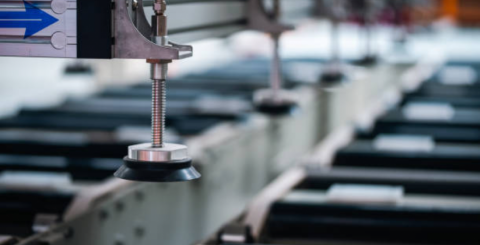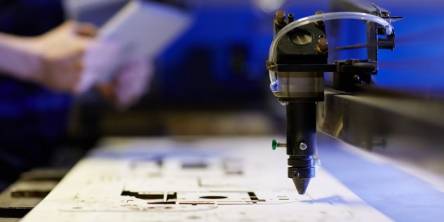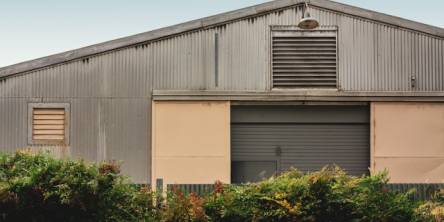Exploring the World of Metal Table Legs: Design Trends and Innovations

When it comes to furniture design, one cannot overemphasize the importance of metal table legs, no matter how small they may be. These elements are not only the structural components but also determine the appearance and use of the tables. Most of the innovations in this area are derived from screw manufacturing firms that are constantly improving the technology and designs that hold and reinforce the metal table legs and their appearance.
Factors
The current trends in metal table leg designs are therefore a combination of modern looks, eco-friendliness and technology. Currently, designers are in close contact with screw manufacturing companies to ensure that they come up with legs that are flexible and can be used in different designs and functions. Ranging from simple designs with smooth and straight legs to complex designs with artistic base, the options are numerous. Another trend is the use of recycled materials as the demand for environmentally friendly furniture products is constantly increasing.
New Technologies
Manufacturers of screws have been on the forefront in determining the technological advancement that affects the design and functionality of metal table legs. Some of these innovations include the creation of new types of screws that provide stronger and more secure joints hence increasing the stability and the weight bearing capacity of the tables. Also, the development of corrosion-resistant coatings and magnetic screws is increasing the sturdiness of metal table legs and their ability to withstand different climates.
Impact of Globalization
The global market plays a major role in determining the design and utility of metal table legs. For instance, the need to produce metal table legs in Spanish-speaking countries has led to designs that are not only durable but also beautiful, incorporating both the traditional and the contemporary approaches to manufacturing. This cross-cultural exchange enhances the variety that is available in the market and gives the consumer a chance to select from a global list of designs.
The Role of Customization
Flexibility is another aspect in the world of metal table legs and this is because products developed by screw manufacturing firms can be customized. Customers are now able to order legs that are made to order for a particular design or size, which is ideal for special areas or themed designs. This level of customization is revolutionizing the way designers and the public view furniture, making it a cornerstone of individual and business space planning.
Possible Developments
As for the future, metal table leg design is expected to become even more creative. Manufacturers of screws are now developing smart screws that can be adjusted to the height and stability of the structure as required by the users. Furthermore, there is a trend towards the incorporation of technology, for example, charging ports and IoT compatibility, which may completely change the way people use furniture in familiar environments.
Designers and screw manufacturing companies will remain the key players in the development of these innovations. With the advancement of technology and the incorporation of sustainable materials, the simple metal table leg is set to become one of the most important elements of contemporary furniture design, both functional and aesthetic. The process of discovering and creating in the realm of metal table legs is only just starting, and there are many interesting prospects for both the buyer and the entire industry.
As these innovations continue to evolve, we can expect even more groundbreaking designs and functionalities that will redefine modern furniture. This ongoing evolution promises a future where metal table legs not only support our furniture but also enhance our living and working spaces in unprecedented ways.
Similar Articles
Selective Laser Sintering, or SLS, has established itself as one of the most reliable and widely used 3D printing technologies. This method is valued for its ability to produce complex, durable, and high-quality parts without the constraints of traditional manufacturing.
In the retail and display industry, the visual appeal of products is paramount. Customers are constantly drawn to displays that are not only eye-catching but also provide an immersive experience.
As previously established, CO2 laser technology operates by shining a high-power infrared beam on a mixture of gas that contains carbon dioxide, nitrogen, and helium. This technology is well known for the fact that it is able to engrave onto a variety of materials such as wood, glass, plastic, leather, and even some metals with high precision and without contact.
CNC Machining has emerged as a vital technique in the current production process, as it provides an efficient and accurate means of manufacturing items with complex geometries. This technology is applied across aerospace, automobile, and medical devices manufacturing fields, and various other industries.
Find out what to look for in a reliable CNC machining manufacturer, from quality assurance and advanced technology to customer service, for efficient project success.
Save on pipe relining costs with smart planning. Learn how to reduce expenses through targeted repairs, material choices, off-peak scheduling, and competitive bids.
When it comes to metalworking, the quality of your equipment can make a significant difference in the efficiency and accuracy of your projects. Among the essential tools in any metalworking shop is the sheet metal brake, which plays a crucial role in bending and shaping metal sheets
In the dynamic nature of the industrial sector, high-efficiency gate valves play a crucial role in the flow control system. Leading valve suppliers and globe valve suppliers are always engaged in the development of this technology to enhance the efficiency of the equipment.
When it comes to constructing a metal building, whether it's for industrial, commercial, or residential use, choosing the right metal building company is crucial. Metal buildings offer durability, flexibility, and efficiency, but only if they are designed and constructed correctly.









